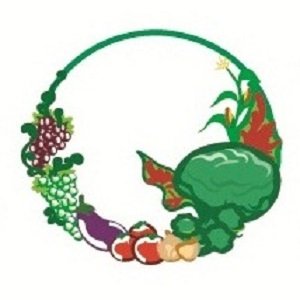
The Local Food Difference
From where is your food? And why does it matter?
Local food sales account for an estimated 1.5 percent of the value of U.S. agricultural production (read more here), and a lot of the fresh produce sold at your typical grocery store is imported. Industrial-scale agricultural operations work hand-in-hand with national and international distributors and large grocery store chains to create a corporate-run food system. This system has done a great job of providing us with fruits and vegetables very consistently and inexpensively. We are all quite used to being able to buy a strawberry whenever we please, and expect year-round availability.
But while this food costs less on a cash basis, consumers end up “paying” in other ways.
Consider, for example, two different ways of getting a fresh tomato.
Two different journeys…
Have you ever seen perfectly round, orange-red tomatoes in your grocery store’s produce aisle in March and wondered how they got there?
Most of the fresh market tomatoes consumed in the United States come from Mexico, California, or Florida. Here’s how tomatoes typically get from one of those places to your plate in Minnesota:
First, they are picked while they are still green to help them travel better.
Next, they’re pre-cooled to remove field heat, then packed in crates or boxes for transport.
Then they’re loaded onto a refrigerated truck that takes them to a regional distribution center, a trip that takes 1-3 days.
At the distribution center, they are stored in a special ripening room where they are treated with ethylene gas for 2-5 days.
Next, they are put on another refrigerated truck and transported to the grocery store, where they may sit for several days before being purchased.
Altogether, your average tomato from California or Mexico spends one to two weeks traveling thousands of miles before you pick it up.
Now, compare that to a locally grown tomato’s journey—specifically, one grown at Featherstone Farm:
During the tomato harvesting season, different varieties of tomatoes ripen at different times. Abby, our field manager, monitors the ripening process. A day or two before your farm box is set to be packed, he sends a crew of farm workers into the field to pick the tomatoes that are just about to reach peak ripeness.
From the field, the harvested tomatoes travel a few hundred yards to our warehouse to be washed and stored.
Then, usually within a day, the tomatoes are packed into CSA farm boxes.
Finally, they are loaded onto a truck and driven to our drop sites, where customers like you pick them up.
In short, that Featherstone tomato—picked ripe—took maybe three days to get from the vine to your table, traveling 120 miles or fewer.
…for two very different tomatoes.
These two different ways of getting a tomato result in two very different tomatoes, especially when it comes to flavor and nutrition:
Local fruits and vegetables often taste better. Why? First, local growers have the freedom to grow varieties that taste better because they were not bred to travel, store, or keep for long periods of time. Second, produce can be picked ripe, at the height of their flavor. And third, local food is fresher, meaning the various volatile compounds that make it taste good haven’t had time to break down.
Local foods are richer in nutrients. Numerous studies have shown the nutritional superiority of fresh, local fruits and vegetables. In tomatoes, for instance, vine-ripened tomatoes have much more lycopene, a powerful antioxidant responsible for tomatoes’ red color.
And because locally grown tomatoes don’t need to last for a week on a truck and in a warehouse, you’re more likely to experience the full spectrum of tomato varieties, from Zebras and Sungolds to Purple Cherokees and Brandywines.
And that makes cooking—and eating—much more interesting and fun.
While we used a tomato in this example, many other fruits and vegetables share these benefits when they are grown and consumed locally. Fall kale and carrots taste better when they are grown in the upper Midwest because cold nights and light frost prompts these plants to produce more of the natural sugars that act as a sort of “plant antifreeze.” Look for more information about the benefits of eating local in our weekly email newsletter, social media posts, and blog.
5 Social and Environmental Benefits of Local Eating
Besides offering fresher, tastier produce, local food systems offer significant social and environmental benefits, too.
Supporting local jobs and economies. Locally grown food systems keep money within the community. When you buy from local farmers, you support local jobs, stimulate economic growth, and help sustain vibrant, healthy communities.
Strengthening regional food security. Local food systems contribute to regional food security by providing more stable and reliable food sources. Industrial food systems, on the other hand, rely on long supply chains that are vulnerable to global events.
Reconnecting people to one another—and the land. Local food systems foster vibrant community connections around food, reconnecting urban and rural residents and creating networks of support and shared knowledge. Price, as part of the Featherstone Farm CSA, you’ll get to see exactly where your food comes from—whether that’s through our newsletters, social media, or in-person farm events.
Reducing your food’s carbon footprint. The average meal travels about 1,500 miles to reach your plate. Produce from Featherstone Farm CSA, on the other hand, travels no more than 150 miles. This reduction in “food miles” helps mitigate climate change and decrease air pollution.
Preserving soils and protecting wildlife. As a certified organic farm, Featherstone Farm engages in sustainable farming practices designed to preserve the rich, rare soils on its fields, and protect the unique environment of the Root River valley in southeastern Minnesota.


